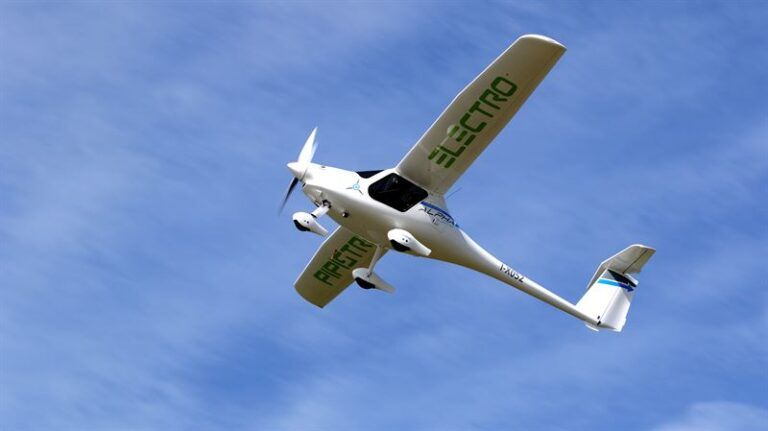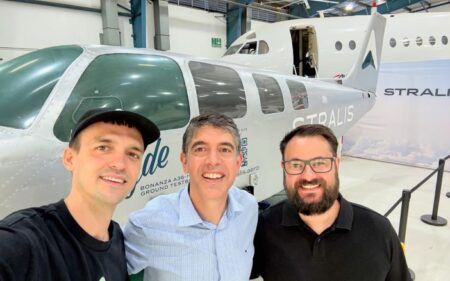Researchers from Sweden have found that today’s electric aircraft start to provide climate change reduction benefits after being used for around 1,000 flight hours, but that the rare earth minerals used in the batteries remain a major drawback.
The researchers from Chalmers University of Technology conducted a Life Cycle Assessment (LCA) of Pipistrel’s Alpha Electro, a two seater battery-electric trainer aircraft available today.
The LCA compares the Alpha to its fossil fuel version, which has the same basic structure as the electric aircraft but uses an aviation gasoline engine and fuel tank, instead of an electric motor and batteries.
According to the study, the electric aircraft’s climate impact is lower than that of its fossil fuel equivalent after a quarter of its expected lifespan, or 1,000 flight hours, with the caveat that only green electricity is used to charge it.
However, the electric aircraft’s increased use of scarce mineral resources in its battery was also found to be a downside.
Rickard Arvidsson, the lead author of the study from Chalmers said, “The key take-home is that small electric aircraft have a notably lower climate impact – up to 60% less.
“However, there is a trade-off regarding mineral resource scarcity – about 50% more even in the most favorable scenario, mainly due to rare metals in the batteries of the electric aircraft.”
The Alpha Electro weighs 550kg (1,200 lbs) when fully loaded and has a maximum flight time of one hour plus reserve. Its battery is a 21kWh NMC (nickel-manganese-cobalt) lithium-ion battery, and the motor produces an output of 60kW. The Alpha Electro assessed was a pre-series model and has been replaced by a series-produced model.
The study found that similarly to electric cars, an electric aircraft is comparatively worse in terms of climate impact when it is new, because making the battery consumes a lot of energy and resources. This impact decreases over time as the electric aircraft is used for emission-free electric propulsion.
The estimated lifespan of the Alpha Electro is at least 4,000 hours, or four times as long as the break-even time.
The researchers used the metric of kg CO2 eq/h – carbon dioxide equivalents per flight hour. The calculations are only true for flights under optimal conditions and where green energy is used. The study was based on data and records provided by Pipistrel.
Senior researcher on the study Anders Nordelöf said “The lifetime of the lithium-ion batteries would have to be about twice as long for the mineral resource scarcity to be about the same for the electric airplane and the fossil-fuel aircraft. Alternatively, they need to have double the energy storage capacity such that only one of two packs are needed onboard for the same flight time.
A conclusion of the study therefore is that the further development of batteries is required as a major step towards reducing the life cycle impacts of electric aircraft.
After the study was carried out Pipistrel has further extended the life of the batteries as much as three times. New battery technologies will further improve both climate impacts and mineral resource scarcity.
“There is a constant development of lithium-ion batteries that can improve the environmental performance of electric aircraft and make it even more preferable than the fossil-fuelled one,” said Arvidsson.
“There are also new battery technologies that could be developed and be applicable to electric aircraft in a longer time perspective, such as lithium-sulfur batteries, although these are still in an early phase of technology development.”
The study, which was published at the end of last year considered a range of impact categories for the LCA. These included: global warming from greenhouse gas emissions; mineral resource scarcity from the use of rare minerals, including lithium for the batteries,;particulate matter formation from particle emissions, acidification from acidic emissions, and ground-level ozone formation from emissions of nitrogen oxides and hydrocarbons.





